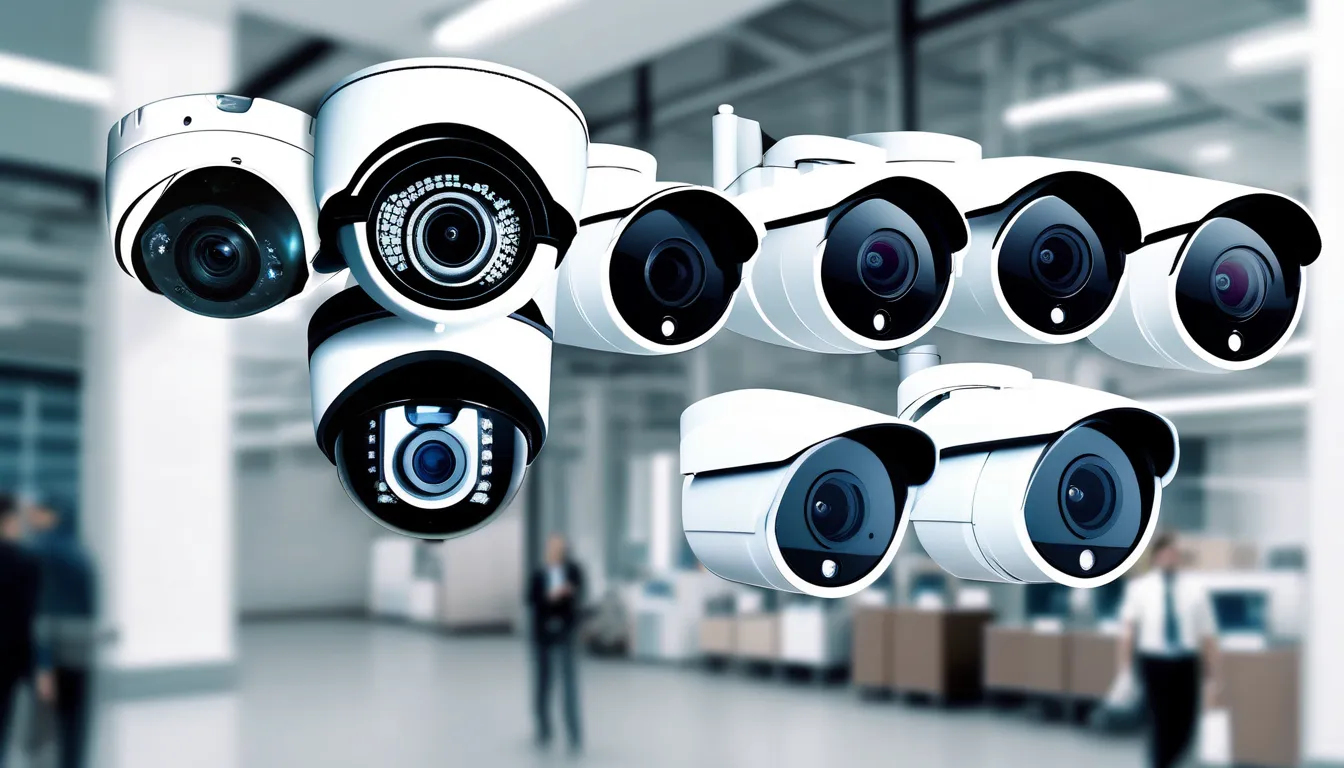
You’ve likely seen the shift in safety cameras from basic surveillance devices to intelligent monitoring systems. But how exactly are smart cameras redefining the safety landscape? With advanced features like facial recognition, object detection, and predictive analytics, these cameras are no longer just passive observers. They’re now integral to proactive policing strategies and informed decision-making. But what does this mean for crime prevention and incident management? As we explore the capabilities of smart cameras, you’ll begin to see the significant impact they can have on safety and security – but just how far-reaching is that impact?
The Evolution of Safety Cameras
As you consider investing in safety cameras, you’re likely wondering how they’ve evolved to meet today’s unique security needs. Over the years, safety cameras have transformed from basic, grainy devices to high-definition, internet-connected systems. This evolution is driven by advances in technology and the increasing importance of safety and security in various settings.
You’ll notice that modern safety cameras are more compact, discreet, and weather-resistant. They’re also equipped with improved low-light sensitivity, wider viewing angles, and higher resolution. This enables them to capture clearer images, even in challenging environments.
Furthermore, many safety cameras now support remote viewing, allowing you to monitor your premises from anywhere, at any time, using your smartphone or computer.
As you explore the options available, you’ll find that safety cameras can be integrated with other security systems, such as alarms and access control. This integration enables a more comprehensive approach to safety and security, providing you with greater peace of mind.
Advanced Features of Smart Cameras
Many smart cameras now boast advanced features that significantly enhance their functionality and effectiveness. You can expect to find features like facial recognition, which uses artificial intelligence (AI) to detect and identify individuals. This feature can be particularly useful for tracking down suspects or monitoring access to secure areas.
Some smart cameras also come equipped with object detection, which can alert you to the presence of specific objects like guns or knives.
Other advanced features you might find in smart cameras include license plate recognition, which can help track down vehicles, and people counting, which can provide valuable insights into foot traffic.
You may also encounter cameras with advanced analytics capabilities, such as heat mapping and dwell time analysis. These features can help you understand how people are moving through a space and where they’re spending the most time.
Additionally, some smart cameras offer integration with other cameras de segurança para empresa preço systems, like alarms and access control systems, to provide a more comprehensive security solution.
Enhancing Crime Prevention Strategies
The enhanced features of smart cameras are pivotal in redefining crime prevention strategies. You can use these cameras to analyze patterns and identify potential hotspots, allowing you to allocate resources more effectively.
Advanced analytics enable you to track and monitor suspicious activity, making it easier to anticipate and prevent crimes.
Smart cameras also enable proactive policing strategies. You can set up alerts for specific events, such as a person loitering in a particular area or a vehicle speeding through a school zone. This allows you to respond promptly to potential threats and prevent crimes from occurring.
Additionally, smart cameras can aid in forensic analysis, providing valuable evidence to help solve crimes.
As you integrate smart cameras into your crime prevention strategy, you’ll be able to make data-driven decisions and optimize your resources.
By leveraging the advanced features of smart cameras, you can enhance your crime prevention efforts and create a safer community.
Real-World Applications of Smart Cameras
Your crime prevention efforts will become more effective once you start applying smart cameras in real-world scenarios.
Smart cameras are being used in various settings, including residential areas, commercial spaces, and public places, to enhance safety and security.
These cameras can be integrated with existing systems, making them a cost-effective solution for crime prevention.
Here are some ways you can use smart cameras in real-world applications:
- Perimeter protection: Use smart cameras to monitor the perimeter of your property or business. These cameras can detect and alert you to potential intruders, allowing you to take prompt action.
- Facial recognition: Implement smart cameras with facial recognition capabilities to identify known individuals or potential suspects. This feature can be particularly useful in high-crime areas or in businesses with high security risks.
- Crowd monitoring: Use smart cameras to monitor crowds in public places, such as shopping malls or stadiums. These cameras can detect anomalies in crowd behavior, allowing for swift intervention in case of an emergency.
Future of Intelligent Monitoring Systems
As AI technology advances, you’ll likely see significant improvements in intelligent monitoring systems, enabling them to process and analyze vast amounts of data in real-time. This will allow for more accurate and efficient decision-making, making your safety and security even more reliable.
You can expect to see advancements in smart camera capabilities, such as enhanced object detection, facial recognition, and predictive analytics.
You’ll also notice increased integration of IoT devices with intelligent monitoring systems, enabling seamless communication and data exchange between different devices.
This will create a more comprehensive and interconnected safety network, allowing for faster response times and more effective incident management.
As a result, you can expect intelligent monitoring systems to become even more proactive in preventing incidents and responding to emergencies.
With the ability to detect potential threats and alerts in real-time, these systems will be able to initiate automated responses, such as alerting authorities or triggering alarm systems, ensuring your safety and security.
This is the future of intelligent monitoring systems, and it’s an exciting and rapidly evolving landscape.
Conclusion
As you consider the impact of smart cameras, you’ll see they’re no longer just passive surveillance devices. They’re now proactive tools that drive informed decision-making and redefine safety. With real-time insights and advanced features, smart cameras are revolutionizing crime prevention and incident management. As technology continues to evolve, you can expect even more sophisticated intelligent monitoring systems to emerge, further transforming the safety landscape. You’ll witness a future where safety is more proactive and predictive than ever before.




